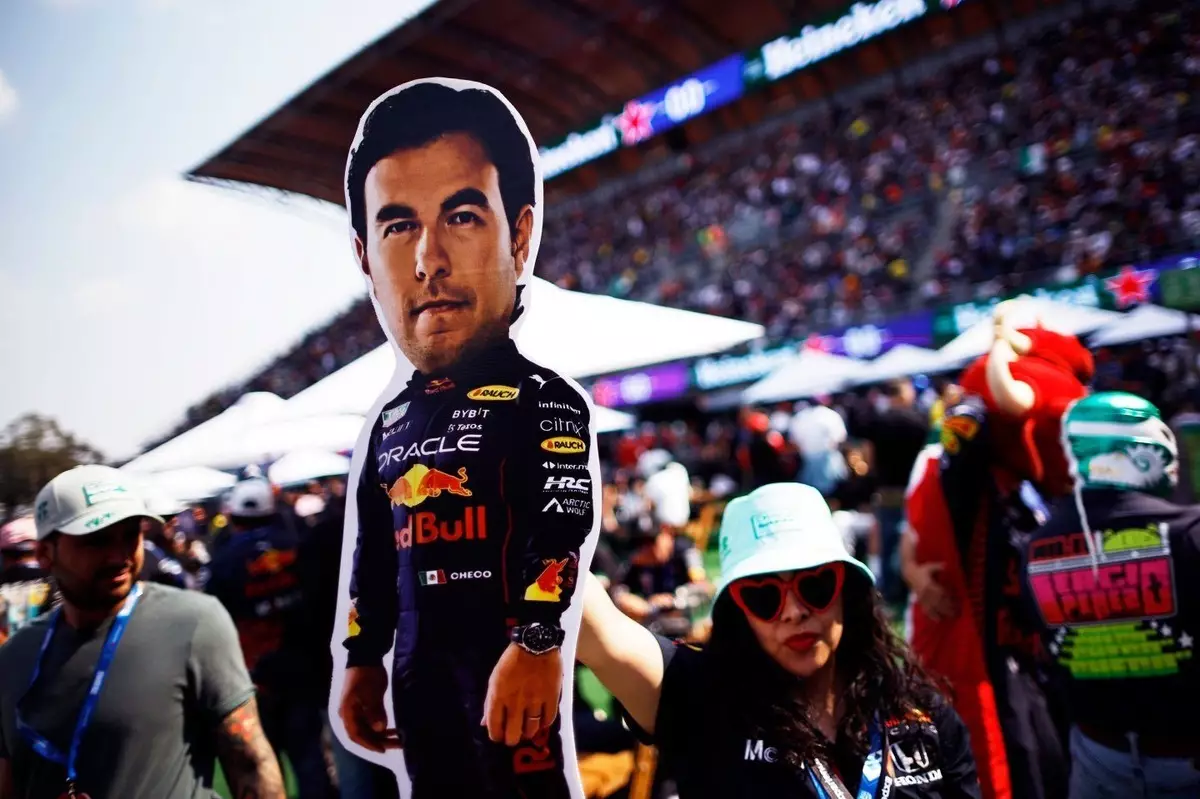The Mexico Grand Prix stands as a testament to the rapid evolution of Formula 1 in the nation, underscored by its consistent sell-out events and burgeoning fan base. Despite the uncertainties surrounding local hero Sergio Perez’s future in the sport, the race’s organizers remain steadfast in their belief that the event can thrive independent of his presence. With a recent two-year contract extension signed by Perez, one would assume his place is secured in the Red Bull Racing team; however, his ongoing challenges have led the team to consider potential replacements, such as reserve driver Liam Lawson. This creates a backdrop of speculation but also emphasizes an inherent resilience in the Formula 1 fanbase within Mexico.
Since its revival in 2015, the Mexico Grand Prix has been nothing short of a commercial triumph, showing a remarkable ability to draw crowds year after year. The race has sold out for nine consecutive editions, suggesting a robust local interest that transcends individual driver performance. Alejandro Soberon, the race’s director, acknowledges the significance of Perez in amplifying the excitement at the Autodromo Hermanos Rodriguez but asserts that the event’s viability isn’t solely dependent on him. This perspective should inform discussions about the sustainable future of the Grand Prix, hinting at a deeper cultural appreciation for motorsport in Mexico.
Soberon emphasizes a critical point: while the presence of a home-grown talent like Perez undoubtedly enhances the race’s appeal, the Mexican fanbase harbors a profound attachment to Formula 1 as a whole. “Mexicans love Formula 1 deeply,” Soberon stated. This suggests that the race’s survival is interwoven with national pride rather than misplaced dependence on individual athletes. The organizers are currently extending negotiations with F1 for future seasons, recognizing that a shift in local sentiments may well coincide with a broader evolution in the sport, especially as new talent emerges on the grid.
The blend of competitiveness on-track and the quality of the spectacle, as indicated by race promoter Federico Gonzalez, has shifted the audience demographics significantly since the race’s return. It is not merely about cheering for a local favorite; it’s about the overall experience, encompassing the thrill of racing and the event’s vibrant atmosphere. The influence of modern media, particularly the Netflix series “Drive to Survive,” has played a major role in cultivating a diverse audience, educating new fans and reshaping their perceptions of motorsport.
To cement the Grand Prix’s place on the calendar, promoters have adopted a strategic marketing approach aimed at engaging diverse segments of the audience. By working towards a balanced demographic split—33% international, 33% local to Mexico City, and 33% from the broader national market—organizers can tap into diverse streams of attendance and support. This strategy not only reflects the city’s cultural identity but aligns with national tourism goals, creating a more sustainable economic impact around the race.
The impressive figures from the tourism ministry illustrate this impact; last year, 232,000 spectators traveled to Mexico City specifically for the Grand Prix, contributing an estimated economic benefit of $175 million USD. Gonzalez remarked on this symbiotic relationship, indicating that fostering local and international connections is integral to the race’s long-term health. The organizers’ foresight in viewing the Grand Prix as an essential element of Mexico’s international identity further reinforces its significance beyond individual drivers.
The resolve of the promoters has been underscored by the rapid sell-out of the 2024 race tickets, which vanished in just two hours—an impressive feat considering the previous year’s early misfortunes. Even with Perez’s crash on lap one sending ripples of disappointment through the crowd, the immediate return to ticket sales signifies a strong bond between the event and its fans. Such quick recovery reflects the resilience of the Mexican audience’s enthusiasm for the spectacle itself, rather than just their allegiance to a single driver.
The path forward seems promising as Soberon mentioned the proactive measures being taken to extend their contract with Formula 1 in collaboration with local government officials. The optimism surrounding these discussions illustrates a keen awareness of the event’s significance, and the intention to keep this legacy alive for generations to come.
Ultimately, the Mexico Grand Prix has evolved into a cultural phenomenon that encapsulates the spirit of motorsport within Mexico. Regardless of the outcome of Sergio Perez in F1, the steadfast commitment of its organizers and the fervor of its fans will likely ensure the event’s continued success. As the sport continues to grow globally, the Mexico Grand Prix is positioned not merely as a race but as an enduring symbol of national pride and community togetherness. The future of this celebrated event looks bright, steeped in potential that extends far beyond the era of any single driver.


Leave a Reply